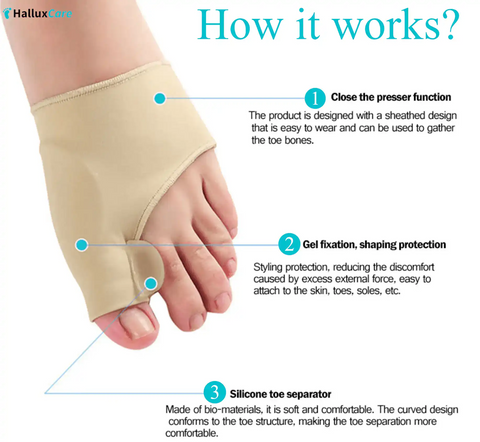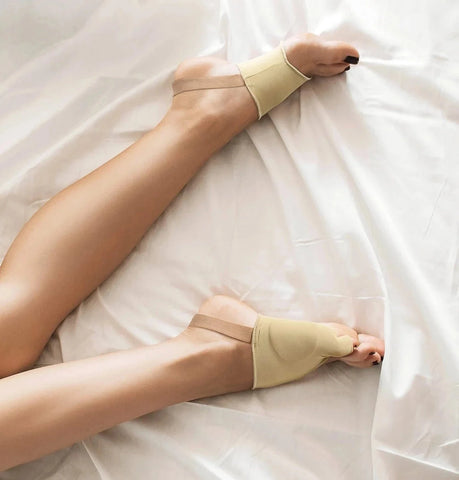Tailor’s Bunion Surgery: Is It Worth It? A Real Patient’s Experience
Last Updated: March 9th 2025
Reviewed by:Dr. Carter, DPM (Doctor of Podiatric Medicine)
If you’ve been struggling with a tailor’s bunion, you know how relentless the discomfort can be. Whether it’s pain from walking, difficulty finding comfortable shoes, or the frustration of temporary fixes, the decision to undergo surgery is not an easy one.
A Reddit user shared their firsthand experience with a tailor’s bunion osteotomy—a procedure that involves breaking, repositioning, and securing the fifth metatarsal bone. Their journey sheds light on what to expect, the challenges of recovery, and whether surgery is ultimately worth it.
What Is a Tailor’s Bunion?
A tailor’s bunion, also known as a bunionette, is a painful bump that forms on the outside of the foot at the base of the pinky toe. Unlike traditional bunions, which affect the big toe, tailor’s bunions impact the little toe and can significantly affect mobility and comfort.
Common Causes
According to the American Podiatric Medical Association (APMA), tailor’s bunions can develop due to:
- ✅ Genetics (inherited foot structure)
- ✅ Poorly fitting shoes (narrow footwear that forces the toes together)
- ✅ Repetitive stress on the foot
- ✅ Abnormal foot biomechanics
Symptoms
- - A visible bump on the outer side of the foot
- - Pain and tenderness, especially when wearing tight shoes
- - Swelling and redness around the affected area
Tailor’s Bunion Surgery: What to Expect
For those with severe pain that doesn’t improve with conservative treatments, surgery becomes a viable option. The Reddit user described undergoing an osteotomy, which involves:
- - Breaking the 5th metatarsal bone to realign it properly
- - Securing the bone with screws or plates for stability
- - Shortening the pinky toe joint for better positioning
This procedure is more invasive than some might expect, as it requires bone repositioning and internal fixation.
The Reality of Recovery
Surgical recovery is often the most daunting aspect. Here’s what the Reddit user highlighted about their experience:
1. Lengthy Healing Process
- 🩹 Recovery can take months—expect swelling and discomfort for an extended period.
- 🚶♂️ Walking may be difficult for several weeks, requiring crutches or a surgical boot.
2. Pain & Mobility Challenges
- ⚡ Post-surgical pain can be intense, especially in the first few weeks.
- 🏠 Even simple tasks, like caring for a child or managing daily chores, become challenging.
3. Was It Worth It?
- 💯 Despite the tough recovery, the user ultimately found the surgery worthwhile due to the long-term relief it provided.
- 🦶 They emphasized that non-surgical options often act as short-term solutions rather than permanent fixes.
Alternative Bunion Relief Options
While surgery can be effective, some people may not be ready for such an invasive procedure. If you're looking for non-surgical relief, consider using orthopedic bunion correction sleeves:
1. Orthopedic Bunion Pain Relief & Correction Sleeve
4.9 ⭐⭐⭐⭐⭐ ( 1843 reviews )
2. Tailor's Bunion Bunionette Pain Relief Protection Sleeves
💡 Other Non-Surgical Measures:
- - Wider footwear with extra toe room
- - Orthotic insoles for better foot alignment
- - Ice therapy to reduce swelling
- - Stretching exercises for toe mobility
Should You Get Tailor’s Bunion Surgery?
Surgery is a big decision, and while it can provide lasting relief, it’s not for everyone.
✅ Surgery Might Be for You If:
- - Pain is severe and persistent, even with non-surgical treatments.
- - The bunion significantly affects your daily activities or ability to walk.
- - You’ve tried conservative methods for months without improvement.
❌ You Might Hold Off If:
- - Your pain is mild to moderate and manageable with better footwear or orthotics.
- - You can adjust your lifestyle to reduce pressure on the bunion.
- - You’re concerned about the long recovery period.
Key Takeaways
✔ Tailor’s bunion surgery is effective but comes with a long and challenging recovery.
✔ Non-surgical treatments, like bunion sleeves and orthotics, may help manage pain.
✔ Consult a podiatrist to determine if surgery is the best option for you.
Practical Tips for Managing Tailor’s Bunion Pain
👟 Wear wide-toe box shoes to reduce pressure on your pinky toe.
🦶 Use bunion sleeves to cushion and protect the affected area.
🧊 Ice therapy can help reduce swelling after long periods of standing.
🧘♀️ Stretch your toes daily to improve foot flexibility and prevent stiffness.
Frequently Asked Questions (FAQs)
1. How long does it take to recover from tailor’s bunion surgery?
Recovery varies, but most patients can expect 6-12 weeks before resuming normal activities. Full healing may take several months.
2. Are there risks associated with tailor’s bunion surgery?
Yes. Risks include infection, nerve damage, prolonged swelling, and stiffness. Always discuss potential risks with your podiatrist.
3. Can a tailor’s bunion come back after surgery?
While rare, recurrence is possible if improper footwear or biomechanical issues persist. Following post-surgery recommendations helps reduce the risk.
4. Are bunion correction sleeves effective?
Bunion sleeves can’t reverse the deformity, but they help with pain relief and protection, making them a great non-invasive option.
Final Thoughts
Tailor’s bunion surgery is a life-changing but demanding procedure. The Reddit user’s experience highlights the challenges of recovery, but also the relief and freedom that come with correcting the problem permanently.
If you’re considering surgery, weigh the risks and benefits carefully—and if you’re not ready for surgery, investing in bunion sleeves and proper footwear can help manage discomfort.
Have you dealt with a tailor’s bunion? Would you consider surgery, or do you prefer non-invasive treatments? Let’s discuss in the comments below!




